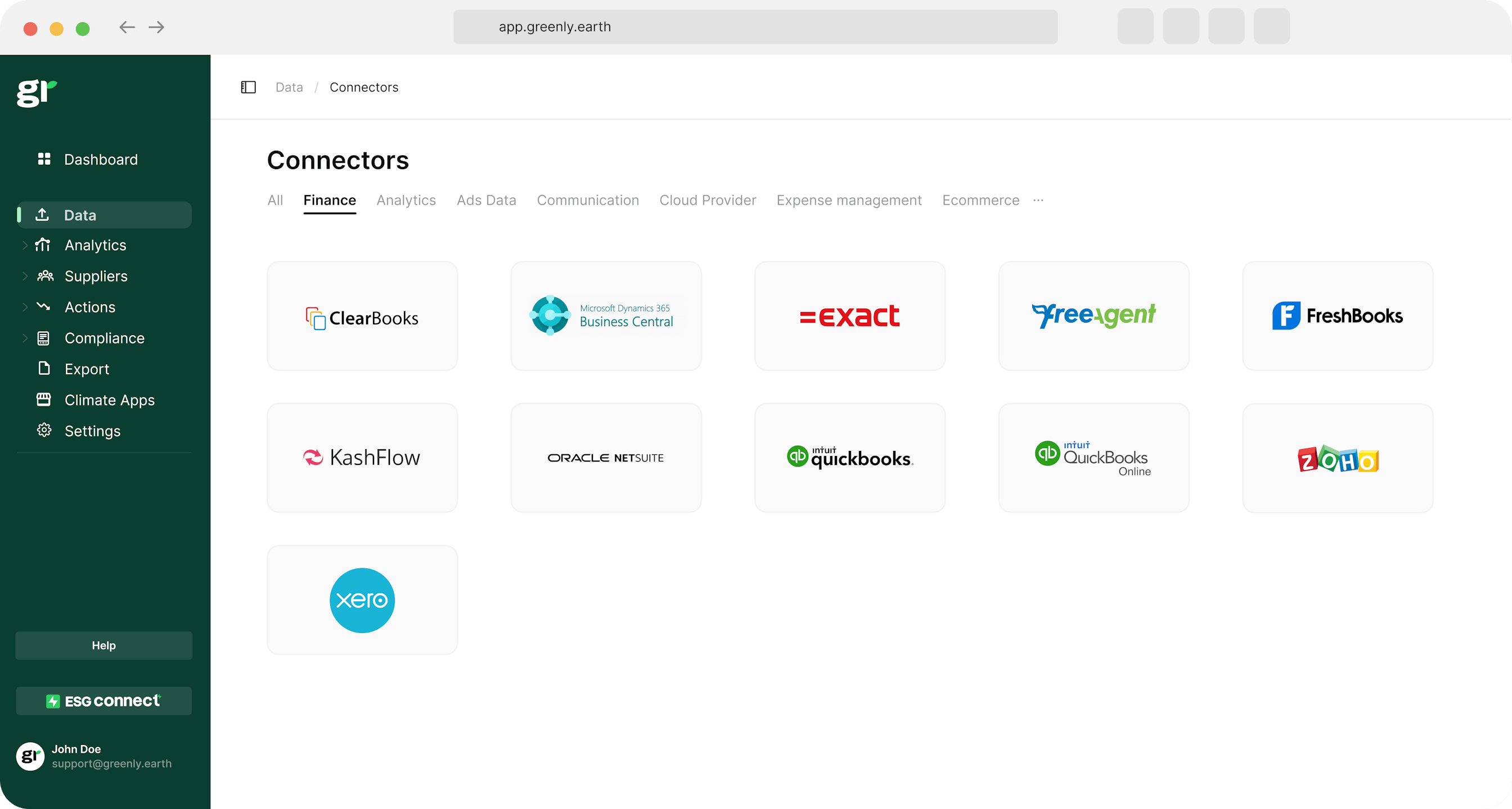
California Climate Accountability Package: SB253, SB261, & SB252
What is the California Climate Accountability Package, and how do SB 253 and SB 261 (SB 219), and SB 252 help the state work towards their environmental goals?
ESG / CSR
Industries



The state of California is known for its hippy nature, beautiful scenery, and most recently – its efforts in the fight against climate change, and efforts such as the California Air Resources Board, also known as CARB, play a huge role in the success of reducing emissions across the Golden state.
👉 What is the California Air Resources Board, otherwise known as CARB, and how does it help California to implement the sustainable measures necessary to reduce emissions and reach their environmental targets?
In this article, we'll explain the goals of the California Environmental Protection Agency, effective and efficient reduction air pollution rules developed by CARB to keep toxic air contaminants at bay, and why air pollution control by air resources board, CARB, is important to prevent air pollutants and to protect public health.
The California Air Resources Board accomplishes this by creating new programs and suggestions for other organizations attempting to reduce emissions that will help to mitigate air pollution.
💡 In short, the California Air Resources Board can be viewed as a statewide version of the country’s Clean Air Act.
Some of the responsibilities held by the California Air Resources Board include creating regulations for vehicles to prevent excessive emissions, or developing new, creative solutions to reduce the amount of greenhouse gasses contributing to air pollution.
This new effort to develop a clean air agency and work towards zero emissions in the state may include:
In this sense, the California Air Resources Board not only sets an example of clean air standards and climate change reform across the state, but also the nation – and potentially the rest of the world.
CARB monitors and manages these priorities while also keeping the effects of the economy in mind – serving as the leading proponent for all measures to regulate air pollution in the state of California.
👉 Ultimately, the goal of the California Air Resources Board is to ensure the safety, health, and well-being of both residents of California as well as its ecological resources.

💡 Reducing air pollution and protecting public health guide CARB's actions, and can also influence the California state government in their future environmental law making.
In general, the California Air Resources Board is responsible for:
👉 In addition to these responsibilities, the California Air Resources Board makes an effort to raise awareness on the importance of air quality and emission reduction tactics to the public.
CARB seeks to accomplish this by holding meetings every month to review the progress made in rectifying the air quality in California, where more options to improve welfare across the state can be discussed. These meetings also discuss additional information, such as how future decisions will be made that will benefit everyone involved: such as the public, businesses, and developing communities.
💡 The California Air Resources Board is dedicated to rectifying air quality in communities where air pollution has impacted them the most.
These include neighborhoods that reside near busy highways, ports, or railways. CARB has helped to develop special programs for neighborhoods in California specifically impacted by air pollution in congested areas with heavy traffic from high emitting vehicles such as trucks.
How else has the California Air Resources Board helped to mitigate the negative effects of air pollution?
The California Air Resources Board has been intact for over fifty years, having been established by then governor Ronald Reagan after several California state leaders remaining adamant on a unified approach to improving air quality across the state.
Thankfully, several of the efforts made by the California Air Resources Board have proven successful. Most notably, CARB has helped to establish regulations that have helped to protect the health of Californians.
💡 For instance the California Air Resources Board has successfully reduced the amount of toxic pollutants created by cars – with vehicle transportation 99% cleaner in the present day than it was in the 1970s.
However, the most empowering effect of the California Air Resources Board is how it has influenced the development of new technologies, such as the catalytic converter, which can help to create cleaner fuels and produce market-friendly low-emission vehicles.
The Global Warming Solutions Act, also originated in California, has helped to amplify the role that CARB plays in helping California to reduce greenhouse emissions. The California Air Resources Board has helped with various cap-and-trade programs, low-emission programs for vehicles, also known as ZEV programs, such as the Low Carbon Fuel Standard.
👉 Ultimately, CARB will strive to help California reach its ultimate environmental goal: to reduce greenhouse gas emissions by a whopping 80% below 1990 levels before 2050.

The California Air Resources Board has offered its expertise and assistance to several other entities striving to reduce emissions across the state of California, with one of their many collaborators being the GSWA – or the Global Warming Solutions Act.
💡 CARB has helped the state of California to create limits on the amount of greenhouse emissions allowed to be produced across the state.
This helps to ensure that other acts, such as the Global Warming Solutions Act, will be successful.
In fact, acts such as GSWA help encourage the assistance from the California Air Resources Board – meaning that the new legislation California has passed to improve their measures in the fight against climate change will motivate California to seek the assistance of CARB more often.
A few of the other ways that the California Air Resources Board has helped California with their other climate acts, such as the Global Warming Solutions Act, is by implementing the necessary regulations for businesses and creating electricity generators within the state.
While the California Air Resources Board remains an important resource for other organizations in the state of California seeking to aid in emission reductions, it cannot bear the responsibility for all the negative impacts caused by climate change.
What are some of the other things California has done to fight against global warming?
| Legislation | Year | Description |
|---|---|---|
| Global Warming Solutions Act (AB 32) | 2006 | AB 32 set the goal of reducing greenhouse gas emissions to 1990 levels by 2020. CARB is responsible for developing and implementing measures to meet this goal. |
| Advanced Clean Cars Program | 2012 | Implemented regulations to reduce smog and greenhouse
 How else California implemented climate legislation?The California Air Resources Board, or CARB, has helped California work towards their climate goals in several different ways – but it isn't the only reason behind California's success in reducing emissions and rectifying the current environmental state. 💡 For instance, the Global Warming Solutions Act, implemented back in 2006 – has influenced states in the country to draft their own climate change acts, such as Vermont and Massachusetts. “The Global Warming Solutions Act wouldn't have been a success without the help of the California Air Resources Board, demonstrating how CARB remains a pivotal resource not only for the state of California to successfully reduce their emissions, but ultimately to influence other states to take action against climate change as well. ” In addition to boards and acts such as GSWA and CARB, California has been passing more climate change legislation than ever before. Last year, California recently passed new environmental legislation in order to facilitate the transition towards a clean economy and the use of renewable energy sources. For instance, the legislation last September revealed that California would be banning residents from buying cars powered by gasoline starting in 2035 – encouraging the state to also improve upon its public transportation system. 💡 In fact, as of May 2023, CARB asked the EPA for help to start the transition to this rule as early as 2026. However, the current issue is that Biden's administration has often refused to promote a phase-out date for selling gasoline vehicles – leaving many confused on Biden's oil policy. The good news is that progress is still underway with CARB and the EPA. It was revealed in April 2023 that vehicle emissions will continue to be slashed until 2032, with automobile manufacturers shifting their production to electric vehicles upwards of 67% by 2032. 👉 This endeavor is set to cost California around $210.35 billion, but will result in benefits worth a whopping $301.41 billion. The California Climate legislation released last year also delineated plans to better manage, like the Diablo Canyon Power Plant, promote the use of renewable energy sources wherever possible, and put an end to fracking to mitigate climate change and to decrease the dependency on fossil fuels. California isn't showing signs of slowing down anytime soon. In January 2023, an additional series of climate bills were introduced that will require businesses to be more transparent about their greenhouse gas emissions. If passed, the bills will demand companies to share their emissions impact with the general public and prevent state funding for companies that choose to invest in unsustainable measures, such as fossil fuel companies. As climate legislation continues to be proposed and passed, the California Air Resources Board will become more essential to the state's success in their climate journey than ever before. Close What challenges must the California Air Resources board overcome to remain successful?In order to remain as a valuable asset to California for the future climate legislation yet to come, the California Air Resources Board will have to increase its efforts even more if they want to continue to effectively reduce emissions. While the California Air Resources Board has been successful in assisting other acts throughout California to reduce emissions, the bitter truth is that climate change is becoming more of a threat – at a rate faster than California can combat climate change at the current momentum. “Areas in California, such as those near drier and desert climates like the greater Los Angeles Area and the San Joaquin Valley – leave residents in these parts of California vulnerable to the effects of poor air quality. In addition to this health threat, global warming has spurred some of the most destructive wildfires in history. ” Ultimately, the California Air Resources Board will have to work even harder than they currently are in order to prevent the droughts, wildfires, rising sea levels, and depleted air quality that continue to affect Californians. It may seem like an impossible task, but the California Air Resources Board has proven capable over the last fifty years. The next fifty years will be even more paramount, the California Air Resources Board will have to build upon their previous success to continue protecting Californians from the effects of poor air quality and climate change. What about Greenly?If reading this article about the California Air Resources Board, or CARB, has made you interested in reducing your carbon emissions to further fight against climate change – Greenly can help you! The California Air Resources Board, otherwise known as CARB, is just one of the many environmental regulations your company might have to comply with. Check out our legislation tracker here to see which rules your company has to adhere to. Greenly can help you make an environmental change for the better, starting with a carbon footprint assessment to know how much carbon emissions your company produces.  Subscribe to the CSO Connect Newsletter We care about your data in our privacy policy. More ArticlesView all |